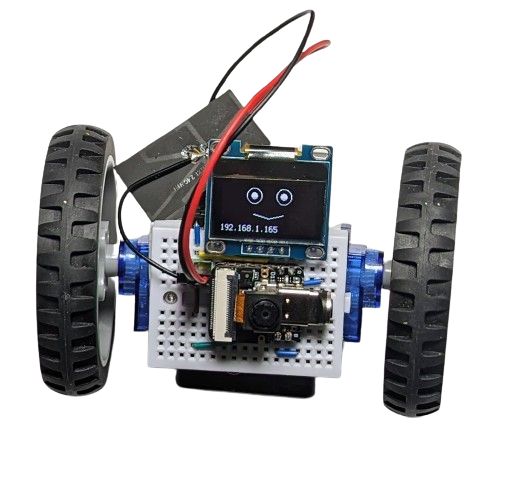BreadboardBot
Web-based control & camera (ESP32S3 Sense)

This example requires the use of the Xiao ESP32S3 or (for camera functionality) the Xiao ESP32S3Sense microcontroller.
-
Wiring
This example uses the OLED wiring, without the line sensors. You can also comment out the OLED functionality in the code and just use the base assembly wiring.
-
Programming
The ESP32S3 needs to be flashed with CircuitPython 8 as described here, except you should use the
Espressif - ESP32S3-DevkitC-1-N8R8image for camera support.Then copy the contents of the
examplesfolder as usual. Make sure that your MCU’s root directory contains thesettings.tomlfile - without it the camera crashes with an out of memory error.Then edit
wifi_config.py, specifying the correct Wifi SSID and password.Finally, edit
code.pyto doimport esp32s3_http_controlorimport esp32s3sense_http_control_camrespectively. -
Result
On boot the microcontroller will show a web server, reporting its IP in both the serial debug message and on the OLED screen. You can connect to that address and use the forward/backward/left/right/stop buttons to control the motors and view the live camera image.
Unfortunately, this is not a very practical solution, as the microcontroller seems to heat up a lot and with the BreadboardBot lacking any cooling system, it might not last for longer sessions. It also consumes the battery rather quickly.